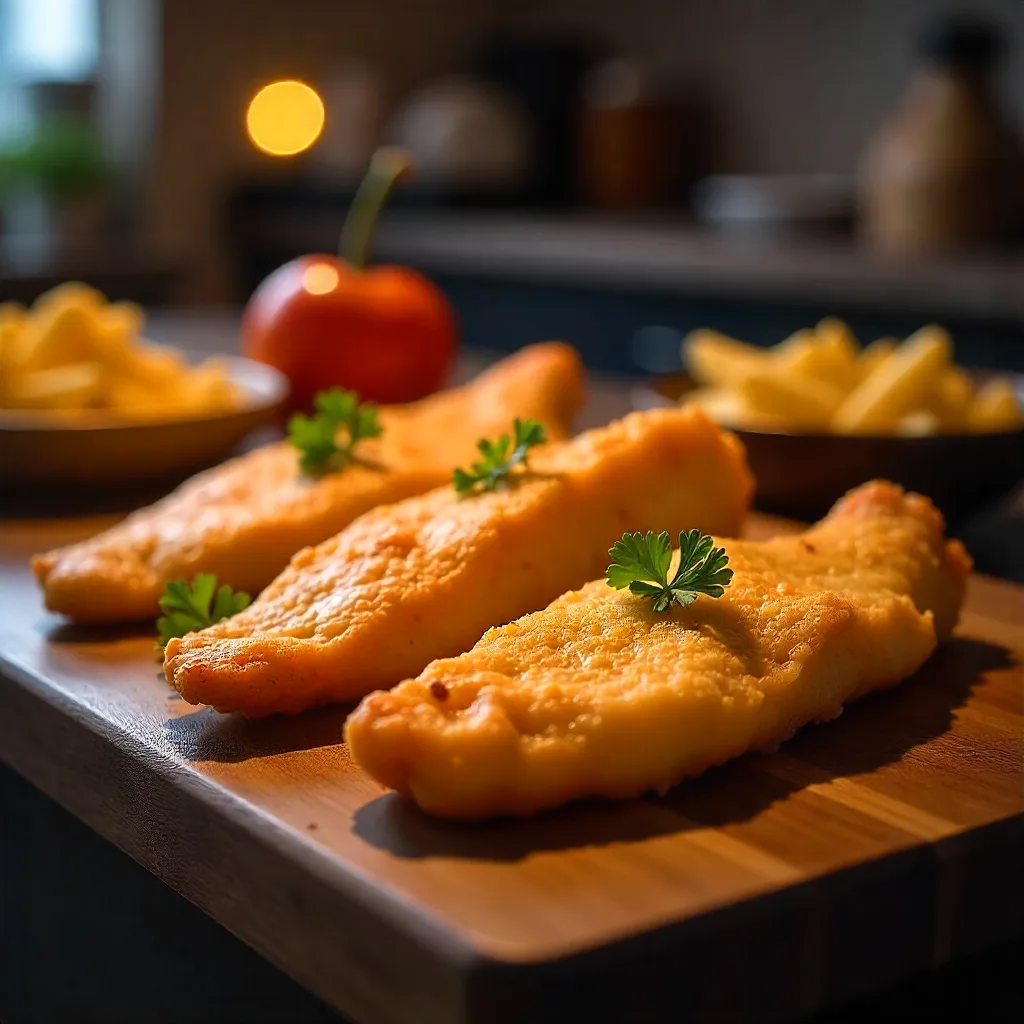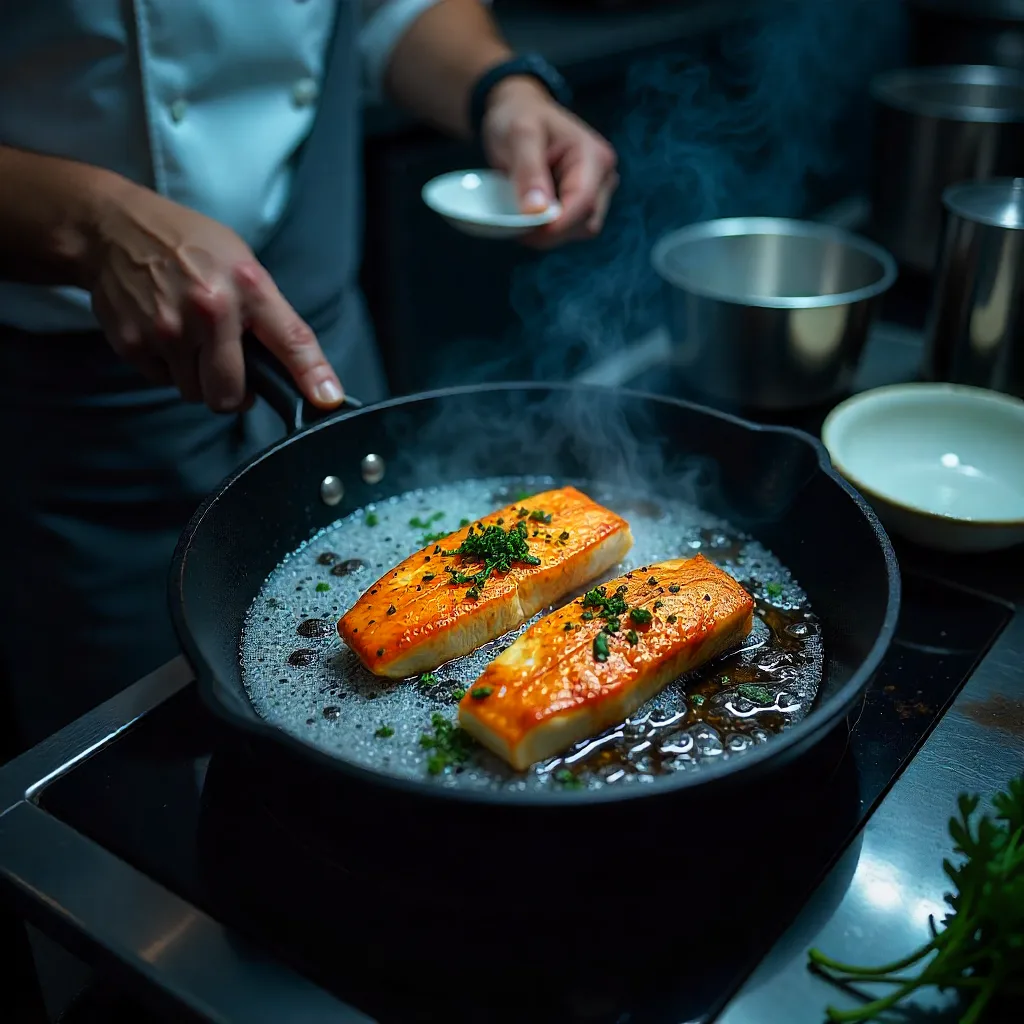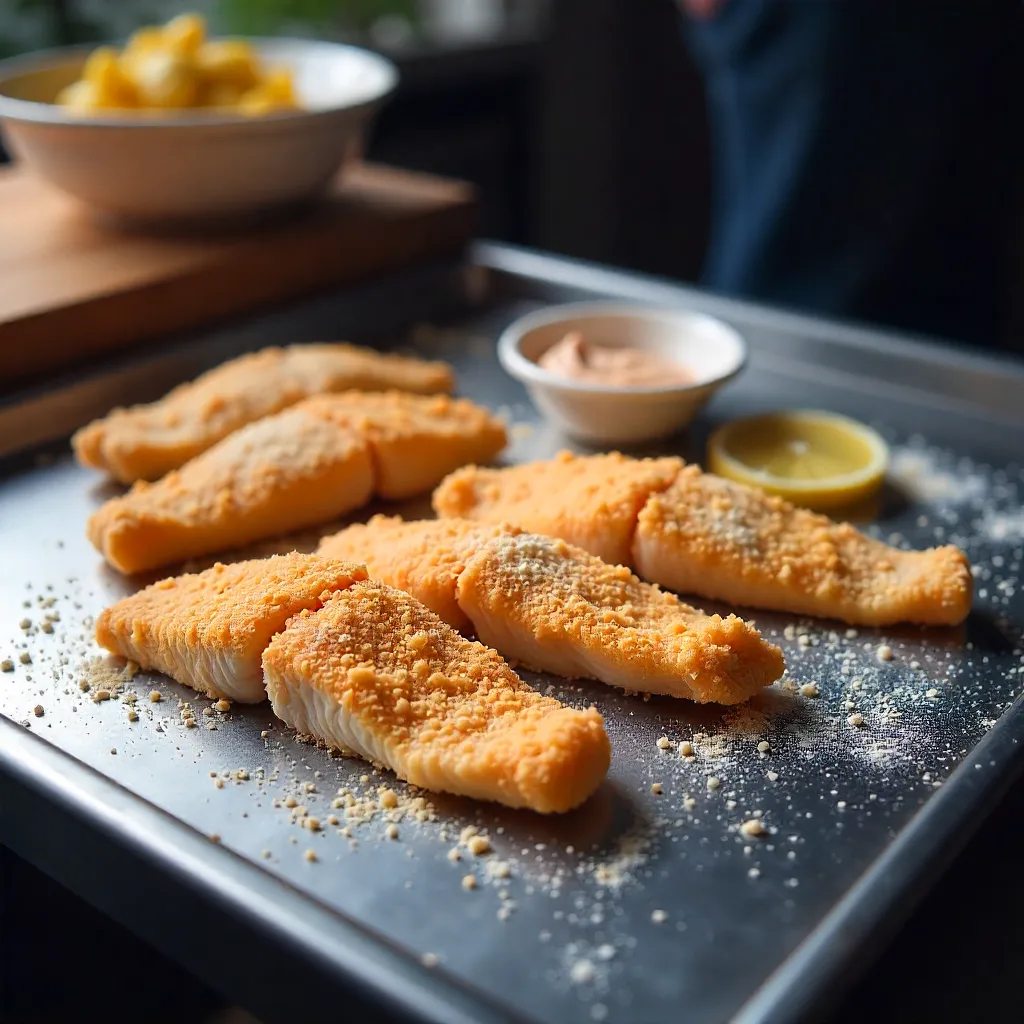
Why Fried Fish Remains a Timeless Culinary Favorite
Master Fried fish is one of those dishes that transcends cultural boundaries and remains a universal favorite. From bustling street vendors in Asia to Southern kitchens in America, fried fish has become an iconic comfort food. Its magic lies in simplicity—flaky, tender fish encased in a crunchy golden crust that shatters with every bite.
For many, fried fish is more than just a meal; it’s a nostalgic experience. Whether it’s Friday night fish fry traditions, seaside memories, or family gatherings, this dish has an emotional connection that makes it timeless.
Understanding the Basics of Fried Fish
Before diving into advanced techniques, it’s important to understand the foundation. The perfect fried fish recipe revolves around three things: quality fish, proper seasoning, and perfect frying technique.
Fish should be fresh or properly thawed if frozen. The choice of coating—whether it’s a seasoned flour dredge, panko crust, or beer batter—dictates the texture of the crust. And of course, oil temperature determines how crispy and non-greasy your fish turns out.
Essential Ingredients for a Perfect Fried Fish Recipe
- Fresh fish fillets or whole fish (like tilapia, catfish, or cod)
- Seasoned flour or cornmeal mix for dredging
- Salt and spices (paprika, cayenne, garlic powder, black pepper)
- Egg wash or buttermilk (for thicker coating)
- High smoke point oil (canola, peanut, or vegetable oil)
Choosing the Best Fish for Frying
When selecting fish, texture and flavor matter most. Firm, white-fleshed fish are ideal because they hold up well during frying. The best fish for frying include:
- Catfish: Southern classic, mild flavor, firm texture.
- Tilapia: Affordable, mild, and readily available.
- Cod: Popular in fish and chips for its flaky texture.
- Haddock: Slightly sweeter than cod, great for deep frying.
- Snapper: Offers a slightly stronger flavor, great when fried whole.
Freshwater vs. Saltwater: Which Fish Works Best?
Both freshwater and saltwater fish work well for frying, but the choice depends on your flavor preference. Freshwater fish like catfish and bass tend to have a sweeter, milder flavor, while saltwater fish like cod and haddock often have a brinier taste and firmer texture.
Tools & Equipment for Professional-Level Fried Fish
To master fried fish at home, having the right tools can make all the difference:
- Deep fryer or heavy-bottomed pan for even heat distribution
- Fish spatula for easy flipping
- Thermometer to monitor oil temperature
- Wire rack to drain excess oil without making the fish soggy

How to Prep Your Fish for Frying
Preparation is key for a great fried fish recipe. Pat the fish dry with paper towels before seasoning. Moisture can cause splattering and prevent the coating from adhering properly.
If using frozen fish, thaw completely and pat dry to avoid excess water. Marinate briefly with seasoning or buttermilk for added flavor and tenderness.
Best Seasonings for Fried Fish
Seasoning plays a huge role in creating that signature flavor. Common seasoning blends include:
- Paprika for smokiness
- Garlic and onion powder for savory notes
- Cayenne pepper for heat
- Dried herbs like thyme or parsley for aroma
The Secret to Crispy Fried Fish Coatings
The key to crispy fried fish is in the coating and frying technique:
- Dry the fish completely.
- Use a well-seasoned flour or cornmeal coating.
- Allow the coating to set for 5–10 minutes before frying.
- Fry at the correct oil temperature (350–375°F).
Wet Batter vs. Dry Dredge: Which Is Better?
- Wet Batter: Produces a thicker, crunchy crust, ideal for fish and chips.
- Dry Dredge: Gives a lighter, crisper coating, common in Southern fried fish recipes.
Both work great—choose based on your desired texture.
Best Oils for Frying Fish: What to Use & Why
Not all oils are equal. Neutral oils with high smoke points like peanut oil, vegetable oil, and canola oil are best. Avoid olive oil—it has a low smoke point and can impart unwanted flavors.
Temperature Control: Key to Perfect Fried Fish
Maintaining the right temperature is crucial. Too hot, and the coating burns before the fish cooks. Too cool, and the fish absorbs oil and becomes greasy. Use a thermometer to maintain 350–375°F consistently.
How to Fry Fish Step by Step
- Preheat oil in a deep fryer or skillet.
- Dredge fish in seasoned flour or batter.
- Fry fish until golden brown (usually 3–5 minutes per side for fillets).
- Drain on a wire rack to maintain crispiness.
Pan Frying vs. Deep Frying: Which Is Better?
- Pan Frying: Uses less oil, great for thin fillets.
- Deep Frying: Ensures even cooking and crispiness but requires more oil.
How to Avoid Common Fried Fish Mistakes
- Overcrowding: Drops oil temperature and makes fish soggy.
- Skipping the thermometer: Leads to undercooked or overcooked fish.
- Not drying fish properly: Causes oil splatter and poor coating adhesion.
Tips for Frying Frozen Fish
If you need to fry frozen fish, choose pre-breaded fillets and cook directly from frozen at slightly lower heat initially, then increase for crispiness.
How to Keep Fried Fish Crispy After Cooking
Place fried fish on a wire rack instead of paper towels to prevent sogginess. Keep it warm in a 200°F oven if serving later.
Perfect Side Dishes to Serve with Fried Fish
- French fries or potato wedges
- Coleslaw for tangy freshness
- Hush puppies (Southern tradition)
- Corn on the cob or green beans
- Tartar sauce or spicy remoulade
Regional Fried Fish Styles Across the World
- Southern U.S.: Cornmeal-coated catfish with hush puppies
- United Kingdom: Beer-battered cod with chips
- Japan: Tempura-style light, airy batter
- Caribbean: Seasoned whole fish with spicy marinades
Southern-Style Fried Fish Secrets
The hallmark of Southern fried fish is cornmeal coating and a side of hush puppies and coleslaw. The fish is typically soaked in buttermilk before dredging, resulting in tender, flavorful fillets.
Asian Fried Fish Techniques You Should Try
Asian fried fish often uses rice flour for a lighter, crisper crust and incorporates aromatic spices like ginger, garlic, and soy-based marinades.
Caribbean Fried Fish Flavors
Caribbean fried fish is often marinated in lime juice, Scotch bonnet peppers, and allspice, delivering a spicy and tangy punch.
Healthy Fried Fish Options
Opt for air frying or oven baking for a healthier twist without sacrificing crunch. Use whole-grain or almond flour coatings for a more nutrient-dense meal.
Air Fryer Fried Fish: A Modern Twist
Air fryers deliver crispiness using minimal oil. Preheat, coat your fish, and cook at 375°F for 10–12 minutes, flipping halfway through.
Gluten-Free and Keto-Friendly Fried Fish Recipes
For gluten-free needs, substitute regular flour with rice flour or chickpea flour. For keto, almond flour and pork rind crumbs work great.
Serving & Presentation Tips for Fried Fish
Serve fried fish on a wooden platter with lemon wedges and dipping sauces. Garnish with fresh herbs for added color and freshness.
Best Drinks to Pair with Fried Fish
- Light beers like pilsners or lagers
- Chilled white wines such as Sauvignon Blanc
- Sparkling water with citrus for a refreshing non-alcoholic option
Storing and Reheating Fried Fish Without Losing Crunch
Refrigerate leftovers in an airtight container. Reheat in an oven or air fryer to restore crispiness—avoid microwaving, which makes it soggy.
Fried Fish FAQs
How do I make fried fish crispy?
Dry your fish, use a seasoned coating, and fry at 350–375°F. Avoid overcrowding the pan to maintain crispiness.
What is the best fish for frying?
Catfish, tilapia, cod, and haddock are among the best choices for frying due to their firm texture and mild flavor.
Can I fry fish without flour?
Yes, you can use cornstarch, rice flour, or almond flour for a gluten-free option.
Can I reuse frying oil?
Yes, strain and store it properly, but avoid using it more than 2–3 times as it breaks down and affects flavor.
What oil is best for frying fish?
Neutral oils with high smoke points like peanut, canola, or vegetable oil work best.
Final Thoughts: Why Fried Fish Will Always Be Irresistible
Fried fish is an experience that combines flavor, texture, and nostalgia. With the right techniques, tools, and seasonings, anyone can master it at home. Whether you love Southern-style catfish, British fish and chips, or spicy Caribbean whole fried fish, there’s a version to suit every taste.


I am not sure where youre getting your info but good topic I needs to spend some time learning much more or understanding more Thanks for magnificent info I was looking for this information for my mission
My brother suggested I might like this blog He was totally right This post actually made my day You can not imagine simply how much time I had spent for this info Thanks
I do trust all the ideas youve presented in your post They are really convincing and will definitely work Nonetheless the posts are too short for newbies May just you please lengthen them a bit from next time Thank you for the post
Your blog is a breath of fresh air in the crowded online space. I appreciate the unique perspective you bring to every topic you cover. Keep up the fantastic work!
Try now: Lucky Jet and see why it’s popular.
Your writing has a way of resonating with me on a deep level. I appreciate the honesty and authenticity you bring to every post. Thank you for sharing your journey with us.
of course like your website but you have to check the spelling on several of your posts A number of them are rife with spelling issues and I in finding it very troublesome to inform the reality on the other hand I will certainly come back again
hiI like your writing so much share we be in contact more approximately your article on AOL I need a specialist in this area to resolve my problem Maybe that is you Looking ahead to see you
Thank you I have just been searching for information approximately this topic for a while and yours is the best I have found out so far However what in regards to the bottom line Are you certain concerning the supply
Nice blog here Also your site loads up fast What host are you using Can I get your affiliate link to your host I wish my web site loaded up as quickly as yours lol
Wonderful web site Lots of useful info here Im sending it to a few friends ans additionally sharing in delicious And obviously thanks to your effort
I was recommended this website by my cousin I am not sure whether this post is written by him as nobody else know such detailed about my trouble You are amazing Thanks
Thank you I have just been searching for information approximately this topic for a while and yours is the best I have found out so far However what in regards to the bottom line Are you certain concerning the supply
Every time I visit your website, I’m greeted with thought-provoking content and impeccable writing. You truly have a gift for articulating complex ideas in a clear and engaging manner.
Your articles never fail to captivate me. Each one is a testament to your expertise and dedication to your craft. Thank you for sharing your wisdom with the world.
Every time I visit your website, I’m greeted with thought-provoking content and impeccable writing. You truly have a gift for articulating complex ideas in a clear and engaging manner.
you are in reality a good webmaster The website loading velocity is amazing It sort of feels that youre doing any distinctive trick Also The contents are masterwork you have done a fantastic job in this topic
I do not even know how I ended up here but I thought this post was great I do not know who you are but certainly youre going to a famous blogger if you are not already Cheers
Your blog has become an indispensable resource for me. I’m always excited to see what new insights you have to offer. Thank you for consistently delivering top-notch content!
I’ve been following your blog for some time now, and I’m consistently blown away by the quality of your content. Your ability to tackle complex topics with ease is truly admirable.
I do not even know how I ended up here but I thought this post was great I do not know who you are but certainly youre going to a famous blogger if you are not already Cheers
Thanks I have recently been looking for info about this subject for a while and yours is the greatest I have discovered so far However what in regards to the bottom line Are you certain in regards to the supply
Wonderful web site Lots of useful info here Im sending it to a few friends ans additionally sharing in delicious And obviously thanks to your effort
My brother recommended I might like this web site He was totally right This post actually made my day You cannt imagine just how much time I had spent for this information Thanks
Magnificent beat I would like to apprentice while you amend your site how can i subscribe for a blog web site The account helped me a acceptable deal I had been a little bit acquainted of this your broadcast offered bright clear idea
Your blog is a testament to your passion for your subject matter. Your enthusiasm is infectious, and it’s clear that you put your heart and soul into every post. Keep up the fantastic work!
Fantastic site A lot of helpful info here Im sending it to some buddies ans additionally sharing in delicious And naturally thanks on your sweat
Just wish to say your article is as surprising The clearness in your post is just cool and i could assume youre an expert on this subject Fine with your permission allow me to grab your RSS feed to keep updated with forthcoming post Thanks a million and please keep up the enjoyable work
Your blog is a testament to your dedication to your craft. Your commitment to excellence is evident in every aspect of your writing. Thank you for being such a positive influence in the online community.
My brother recommended I might like this web site He was totally right This post actually made my day You cannt imagine just how much time I had spent for this information Thanks
I simply could not go away your web site prior to suggesting that I really enjoyed the standard info a person supply on your guests Is going to be back incessantly to investigate crosscheck new posts
Hi Neat post There is a problem along with your website in internet explorer would test this IE still is the market chief and a good section of other folks will pass over your magnificent writing due to this problem
Your writing has a way of making even the most complex topics accessible and engaging. I’m constantly impressed by your ability to distill complicated concepts into easy-to-understand language.
Its like you read my mind You appear to know so much about this like you wrote the book in it or something I think that you can do with a few pics to drive the message home a little bit but other than that this is fantastic blog A great read Ill certainly be back
Hi my loved one I wish to say that this post is amazing nice written and include approximately all vital infos Id like to peer more posts like this
Your blog is a testament to your dedication to your craft. Your commitment to excellence is evident in every aspect of your writing. Thank you for being such a positive influence in the online community.
Ive read several just right stuff here Certainly price bookmarking for revisiting I wonder how a lot effort you place to create this kind of great informative website
Your blog is a treasure trove of valuable insights and thought-provoking commentary. Your dedication to your craft is evident in every word you write. Keep up the fantastic work!
Thank you for the good writeup It in fact was a amusement account it Look advanced to far added agreeable from you However how could we communicate
Somebody essentially lend a hand to make significantly articles Id state That is the very first time I frequented your website page and up to now I surprised with the research you made to make this actual submit amazing Wonderful task
Wonderful web site Lots of useful info here Im sending it to a few friends ans additionally sharing in delicious And obviously thanks to your effort
Your blog is a testament to your dedication to your craft. Your commitment to excellence is evident in every aspect of your writing. Thank you for being such a positive influence in the online community.
Hello my loved one I want to say that this post is amazing great written and include almost all significant infos I would like to look extra posts like this
I do believe all the ideas youve presented for your post They are really convincing and will certainly work Nonetheless the posts are too short for novices May just you please lengthen them a little from subsequent time Thanks for the post
Your blog is a shining example of excellence in content creation. I’m continually impressed by the depth of your knowledge and the clarity of your writing. Thank you for all that you do.
There may be noticeably a bundle to find out about this. I assume you made certain good points in features also.
I’ve recently started a website, the information you offer on this website has helped me greatly. Thanks for all of your time & work.
Hi! I’m at work browsing your blog from my new iphone 4! Just wanted to say I love reading through your blog and look forward to all your posts! Carry on the fantastic work!
thank you
I conceive you have observed some very interesting details, thankyou for the post.
Thank you! That’s great to hear. I love diving into the details, so I’m happy they resonated with you. Appreciate the feedback!